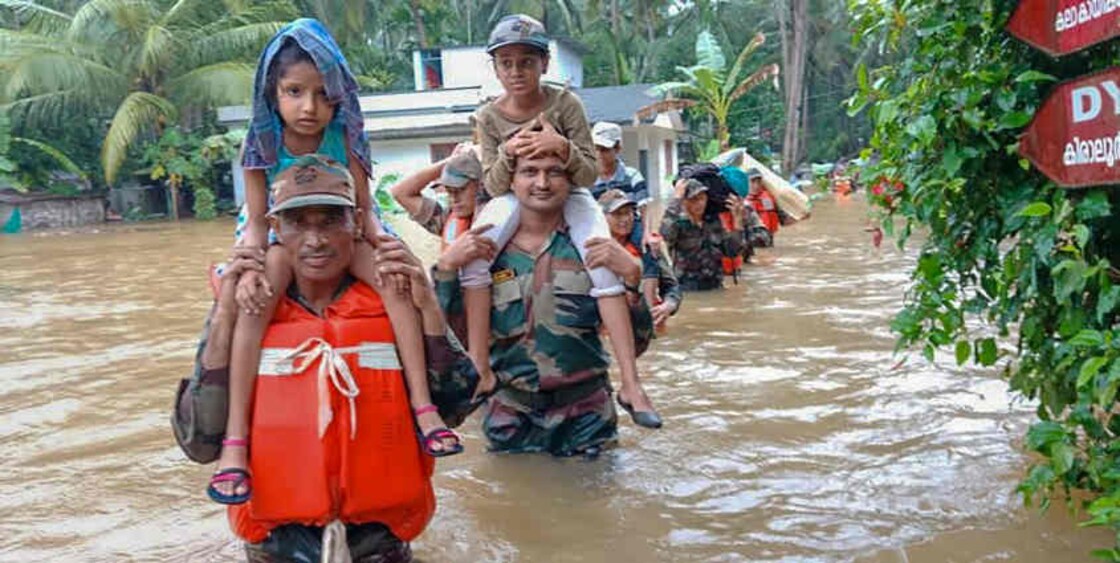'Army can operate only under civil authorities'

Mail This Article
New Delhi: Even as flood-hit Kerala is grappling with rescue and rehabilitation efforts, social media is busy debating whether Army should be handed over the charge of rescue mission in the state. In an answer to such irrational questions, senior officials of the armed forces stated that irresponsible and ignorant people were spreading such information.
According to the officials, no rehabilitation is possible in such areas without aid from the state government, district administration and local civic authorities. The Army is not expected to know the specifics of the topography where they are to operate and may not even be provided with its detailed map. The civil administration’s advice becomes essential for the jawans to know about the inhabited areas, islets of marooned people, priority destinations and decide whether a helicopter or boat would be ideal to access the spot.
Laws and precedence govern deployment of the Army in crisis-hit locations. The most important fact is that the military can be called in only after readying the police, fire force and similar services in the area. For Army's help, first the district collector has to write to the chief secretary. The CS will then send it to the Union government (cabinet secretariat) and defence secretary, who, with permission from the cabinet secretariat, will then make a request to the military headquarters. The Operations Directorate of the military HQ will then direct the commander of the area or sub-area to launch rescue operations.
In the case of Kerala, where incessant rains killed hundreds of people, the responsibility of military rests with the Bengaluru-based commander of Kerala-Karnataka sub-area. If the service of all the three armed forces (Army, Navy and Air Force) are being sought, then the general responsibility of their operations goes to the military commander of the area or sub-area.
The district-level responsibility of disaster management and rescue/rehabilitation goes to the collector. The Army requires the cooperation of the collector and the district police chief for its operations. It is from civil agencies the disaster-affected will seek help. It is from such public administrative bodies that the Army takes orders to act.
Military helicopters directly lift the affected in tragedy-hit locations, but each operation requires the pilot to report to the commander in detail. Any deviation from the commander-directed route will invite explanation. The Army has, in fact, been exempted from performing the burial or funeral of people dead in such calamities. All these guidelines go in tandem with the high democratic values of the country.
The other day, a video showing a man abusing the armed force came to light. Initial investigation hinted that the person was not an Army man but a trouble-maker dressed in Army fatigues.

Army won’t interfere in administration
Legally, the Army is not supposed to interfere in the activities of civil administrations without their knowledge or permission. Even for the jawans to walk in uniform on public roads require the nod from the local civil authorities. In 1997, when RJD leader Lalu Prasad Yadav was poised for arrest in the fodder scam, the CBI feared a law-and-order collapse in the senior politician’s homeland of Bihar. The premier probe agency’s joint director sought the Army’s deployment in the state. The military commander’s brigadier, on receiving the request, took out the rule book and read it out to the CBI official, goes the story.

